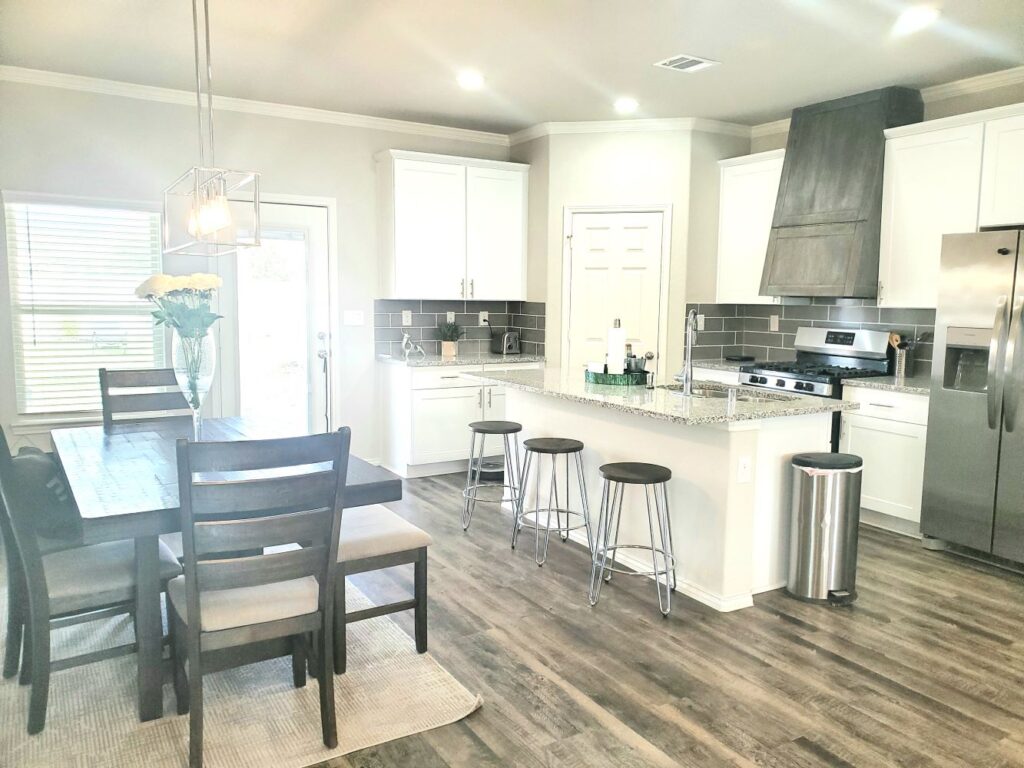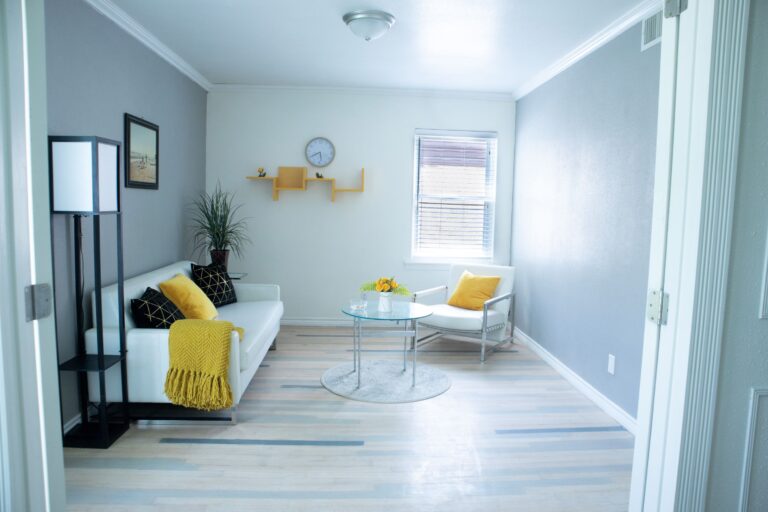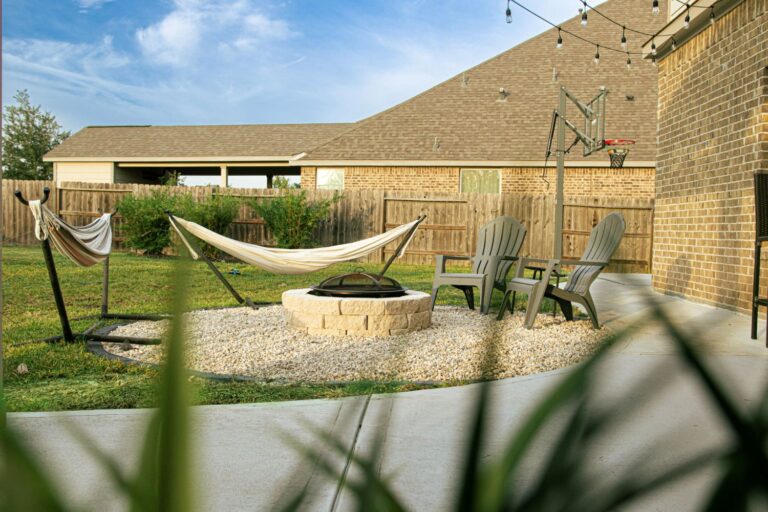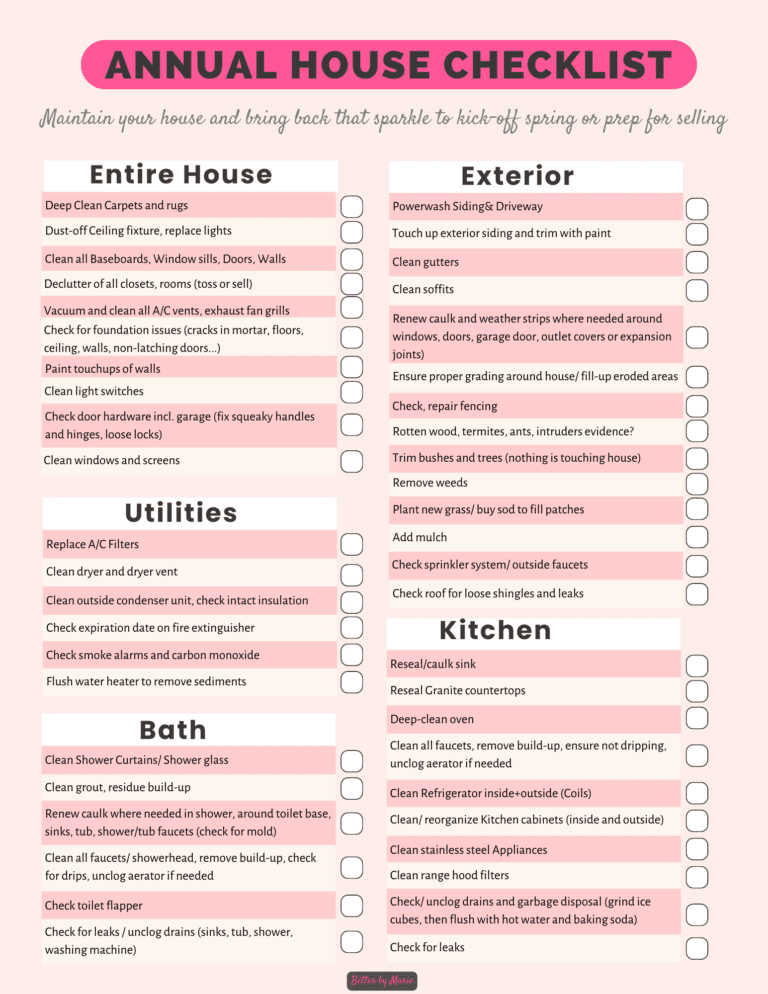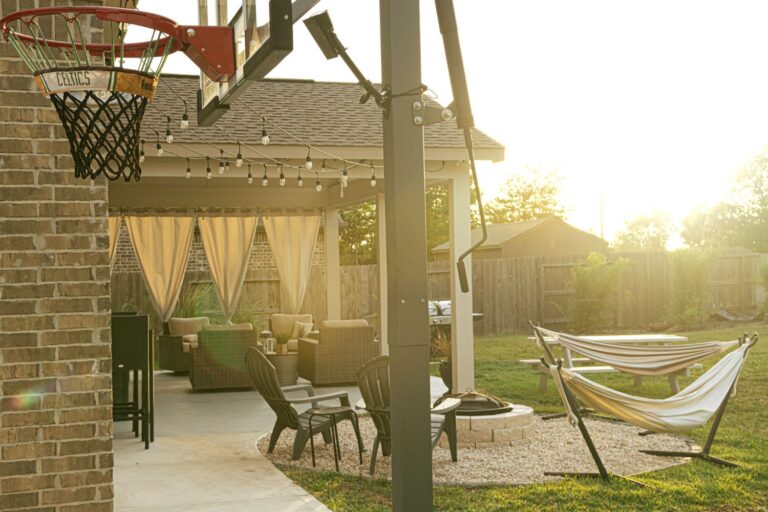Custom DIY Range Hood Microwave Cover
You have a microwave as your kitchen vent? There is no other space in your kitchen to place your microwave? You still were dreaming of that custom range hood design? Well, you can have it all! Let’s get to work and hide that microwave behind a custom wooden range hood.

The Prototype
Before I committed to the project and modifying existing kitchen cabinets and trim, I build a prototype. This way I was able to ensure the design and function were thought through. I could not find any similar project out there which I could leverage, so this one I had to build from scratch.
You may laugh about the prototype and even my husband was a little hesitant and questioning my abilities when he walked one day into the kitchen and saw this. But I was determined that I will get this right eventually. I simply had to because I hated the look of that microwave so much.
The prototype looked ugly but it gave me the confidence that it is possible. It was much easier to measure exact dimensions and the angle of the fluted cover. Let’s look at the next steps to transform that vent hood cover.


Installing the Base of the Range Hood Cover
First, I removed the upper kitchen cabinet doors and the crown molding. Then, I build a wooden frame using 2″x3″ studs which will be used for the top part of the range hood cover. I attached the wooden frame to the upper kitchen cabinets on top of the microwave as well as the ceiling by using wood screws. This way I was able to build a solid base which is needed to support the latch later on.
Building the Microwave Cover Latch
The position of the microwave cover latch is critical. You don’t want to place it too low so that you end up hitting your head, nor too high so that you cannot reach it. At first I build the latch frame which is a three-sided frame out of 2″x3″ studs leaving the bottom of the frame open.


Installing the Microwave Cover Latch
To install the microwave cover latch I first attached the latch to the vent hood cover base by using a continuous hinge. I mounted one hinge with the provided screws onto the studs of the base. The second hinge is mounted onto the frame of the microwave cover latch.


Installing the Range Hood Microwave Cover
Next, I installed 1/4″ birch plywood onto each frame (the base and the latch) by using the nail gun. Once the base is covered, I will no longer be able to reach the power outlet behind it. That’s why I added a power strip on top of the cabinet which is plugged into the power outlet behind the vent hood.
Once all the front covers are installed, I measured the sides by creating a template out of cardboard so that I could cut the exact angle and size. For the sides I also used 1/4″ birch plywood.
To match the style of the kitchen cabinets, I decided to add a shaker style frame onto the range hood cover. I simply cut strips of 1/4″ birch plywood and beveled the inside edges using a router. I installed the strips using wood glue. I also made sure that the strips create a lip, so that they hide the edge of the sides.


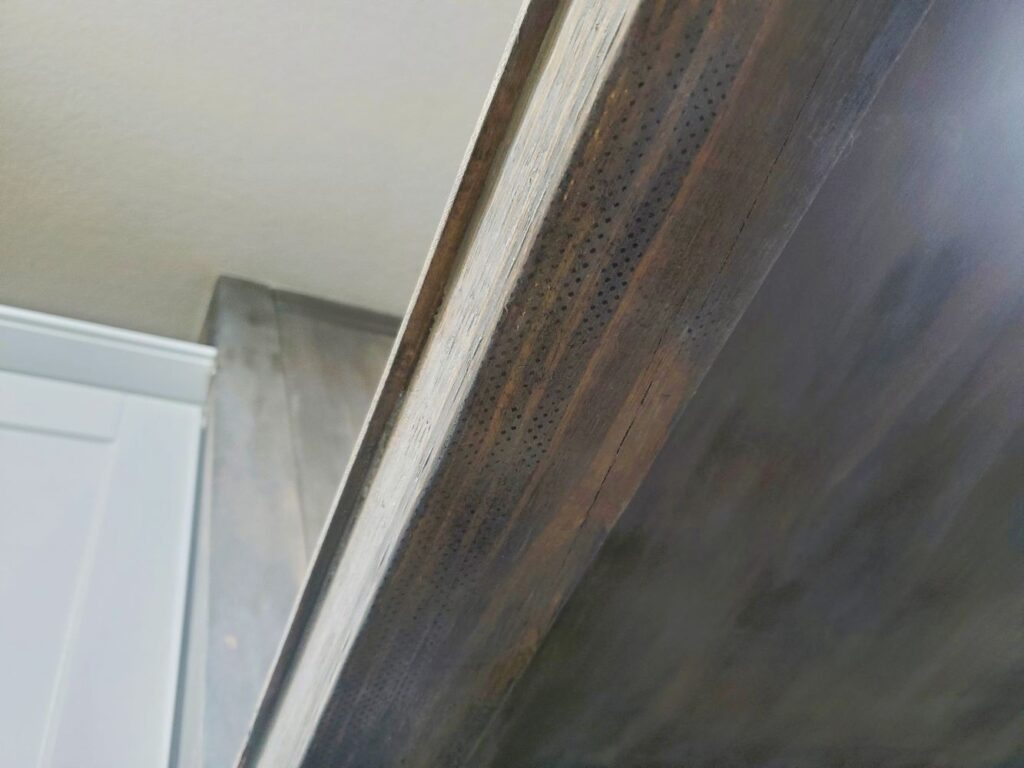
Finishing Touches
Once all plywood was installed, I stained the wood using a mix of Wood Stain Dark Walnut and Antique White (Varathane) from Home Depot.
The final magic touch was the addition of a hydraulic hinge to that the latch would stay open. It took me a while to find the right mechanism as the surfaces are very limited where you can attach the hinge. I had to glue a wooden strip onto the microwave in order to install the shock I purchased from Amazon.

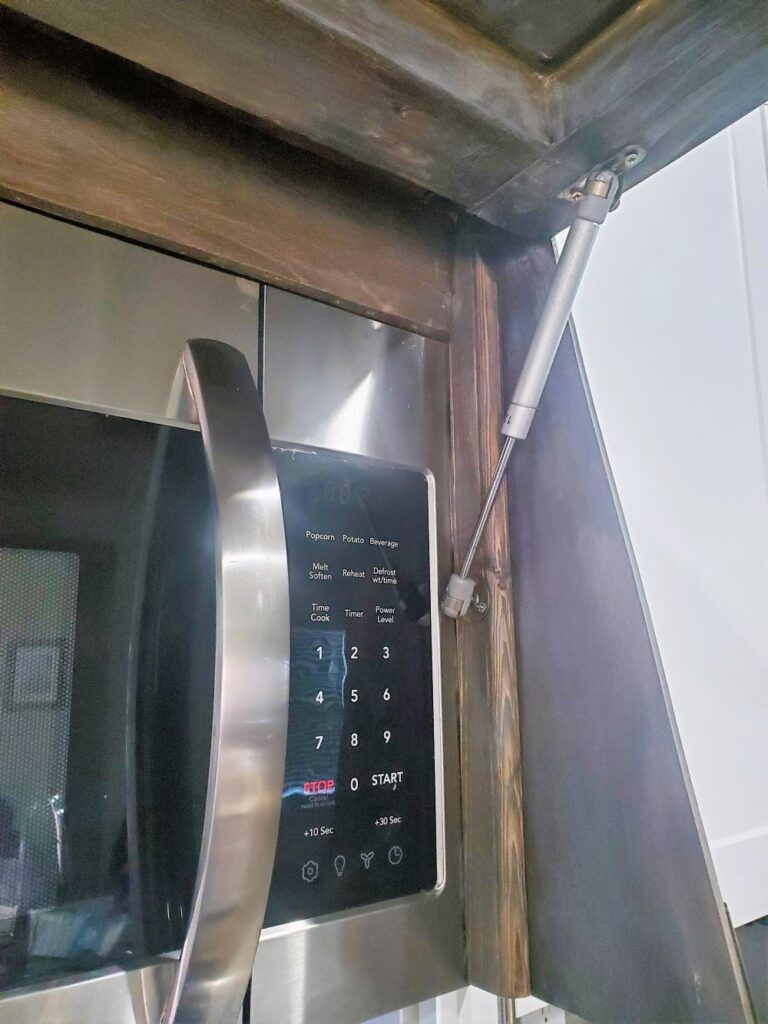
This project wasn’t easy and it took me a while to find the right mechanism. But it worked out great after all. It is very unique. You may have seen a range hood like this before, but people get surprised when they realize that the microwave is behind it.
